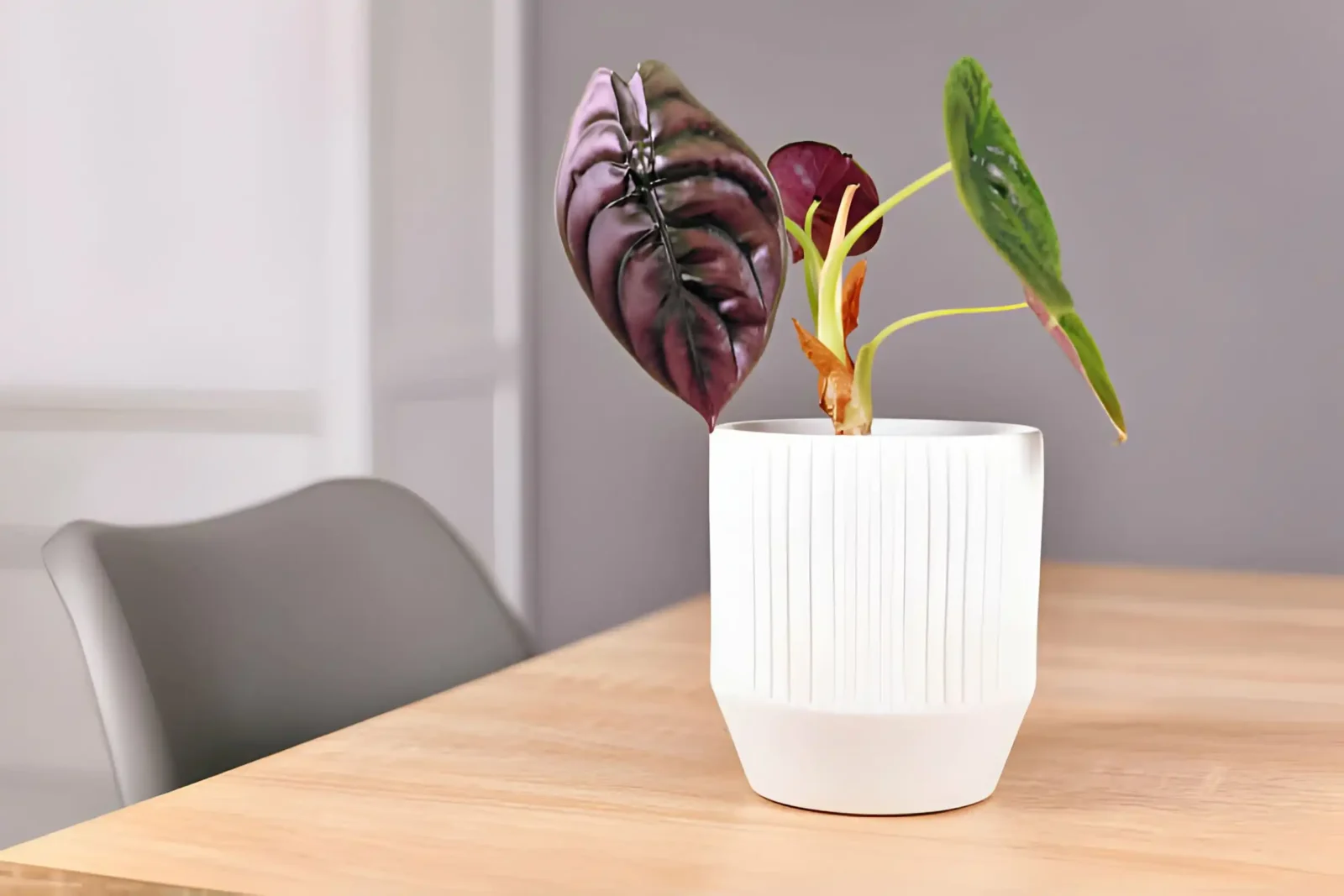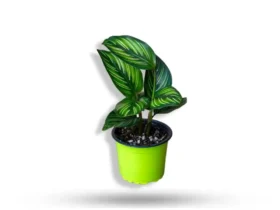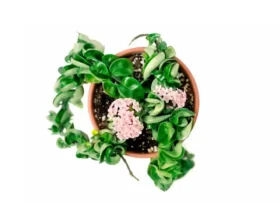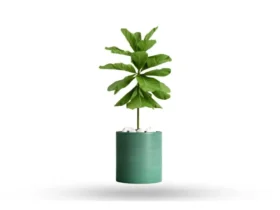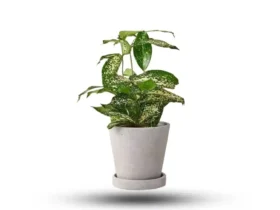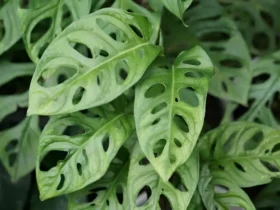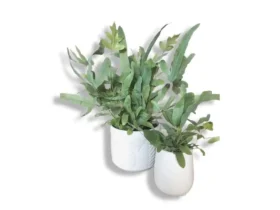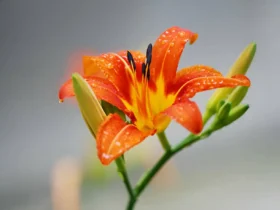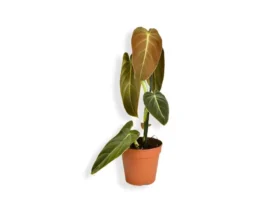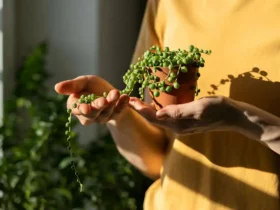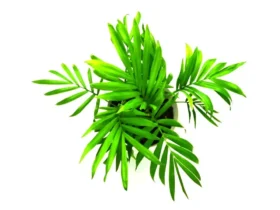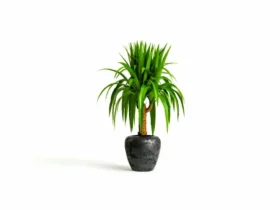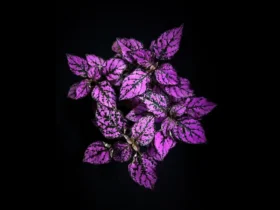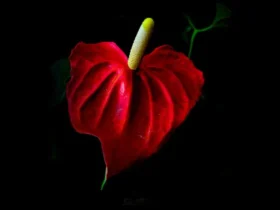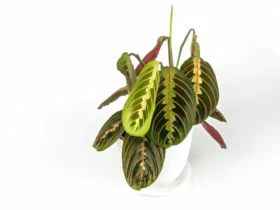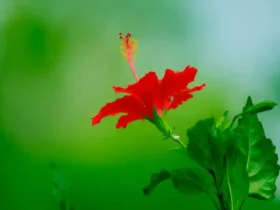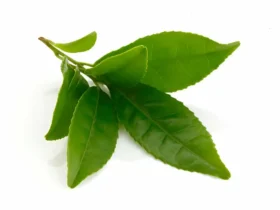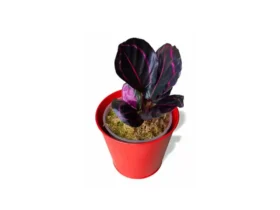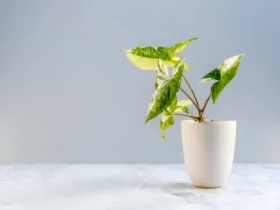Introduction
The year 2019 bore witness to the unveiling of Alocasia Azlanii amidst the lush rainforests of Sabah, Malaysia, a discovery orchestrated by the diligent efforts of scientific minds. Bestowed with its namesake in honor of Sultan Nazrin Shah Ibni Sultan Azlan Muhibbuddin Shah, the Sultan of Perak, this botanical gem swiftly garnered admiration for its extraordinary elegance. Its unearthing marked a momentous stride forward in the annals of botanical exploration, bestowing upon humanity a deeper comprehension of the rich tapestry of tropical flora.
Quick Overview
| Common Name | Red Mambo, Jewel Alocasia |
| Scientific Name | Alocasia Azlanii |
| Sun Exposure | Bright, Indirect |
| Soil Type | Well-Drained |
| Soil pH | 6.1 to 6.5 |
| Family | Araceae |
| Mature Size | Up to 12 Inches Tall |
| Plant Type | Perennial, Bulb |
| Native Area | Subtropical Asia, Eastern Australia |
| Toxicity | Toxic to Pets And People |
Origin and Discovery
Behold Alocasia Azlanii, an enigmatic botanical specimen, a living testament to the boundless creativity and splendor of nature. This uncommon plant species has enraptured the hearts of both fervent plant aficionados and erudite botanists with its resplendent visage and unparalleled attributes. Within the confines of this discourse, we shall embark on an enthralling expedition into the realm of Alocasia Azlanii, delving into its genesis, distinguishing traits, natural habitat, cultural significance, requisite nurturing procedures, methods of propagation, prevalent afflictions, and its pivotal role within the realm of horticulture.
Habitat and Environment
In the lush tropical rainforests of Southeast Asia, Alocasia Azlanii flourishes, thriving within the dim, moisture-laden alcoves. This botanical marvel exhibits a predilection for well-aerated soils and revels in locales boasting unwavering humidity. Within its indigenous habitat, Alocasia Azlanii assumes a pivotal ecological role, sustaining and sheltering a diverse array of fauna within the rainforest tapestry.
Cultural Significance
Beyond its botanical allure, Alocasia Azlanii carries profound cultural resonance in its native territories. Indigenous societies frequently weave this plant into age-old ceremonies and rituals, endowing its unique attributes with symbolic significance. The foliage of Alocasia Azlanii occasionally graces cultural festivities, imparting a natural sophistication to ceremonial occasions and jubilations.
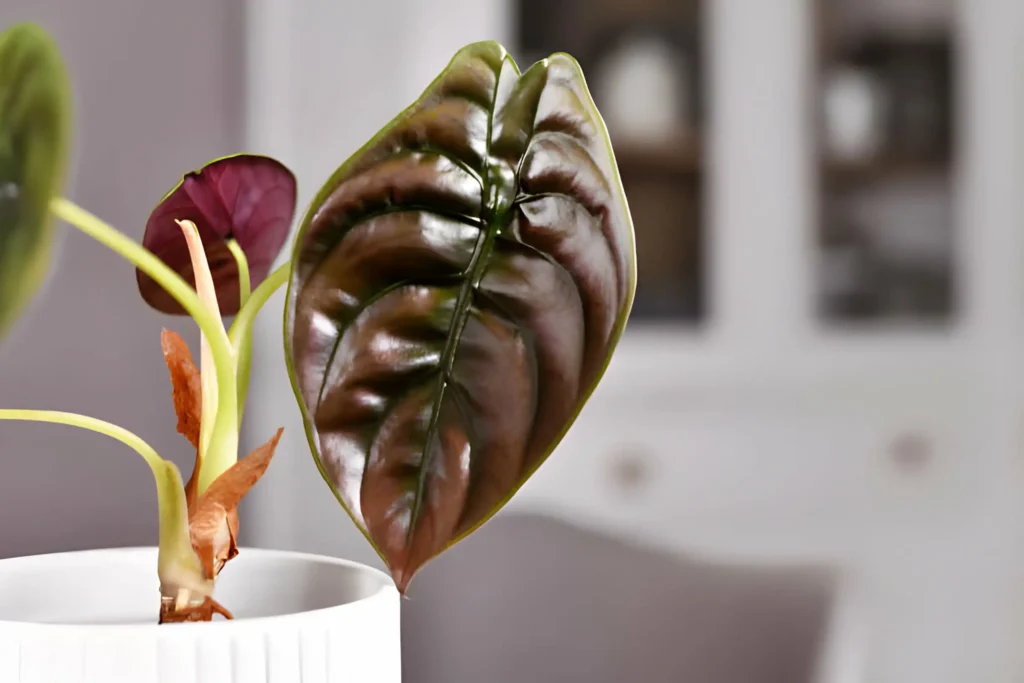
Read Me – Alocasia Sarian: The Ultimate Care And Growing Guide
Caring: Nurturing For Your Alocasia Azlanii
Taking care of your Alocasia Azlanii is akin to tending to a prized treasure. To ensure its health and vitality, you’ll want to lavish it with personalized care. Here’s how to pamper your plant in a way that’s as unique as its beauty:
- Light: Just like a connoisseur of fine art, your Azlanii appreciates the subtle touch of sunlight. Position it near a window where the sunlight gently filters through, providing a delicate dance of shadows. Should your dwelling be a shade darker, fret not! Illuminate its space with the soft glow of artificial light, akin to a luminary’s guiding beam.
- Watering: Your plant as a parched wanderer in a lush oasis—thirsty yet discerning. Maintain a delicate balance of moisture in the soil, ensuring it remains consistently hydrated without drowning. Test the soil’s moisture with a gentle touch, offering a sip only when it feels parched. And remember, moderation is key—your Azlanii prefers a sip rather than a deluge.
- Humidity: Alocasia Azlanii, like a tropical sovereign, revels in the embrace of humidity. If your abode lacks in this opulent offering, bestow upon your plant the luxury of a humidifier’s caress. Alternatively, create an intimate gathering of plants, fostering an environment of shared warmth. A delicate misting, akin to a gentle rain shower, will also bestow upon your Azlanii the royal treatment it deserves.
- Temperature: Think of your Alocasia Azlanii as a discerning aesthete, craving an environment of just the right temperature. Aim for a climate that’s neither too chilly nor overly warm, akin to a temperate haven. Shield it from abrupt drafts and harsh heat, ensuring its surroundings remain as tranquil as a shaded grove.
With these bespoke care rituals, your Alocasia Azlanii will flourish, radiating its unique splendor in a manner that’s as distinctive as its botanical essence. So, indulge your plant with the attention it deserves, and watch as it blossoms into an unparalleled masterpiece of nature’s creation.
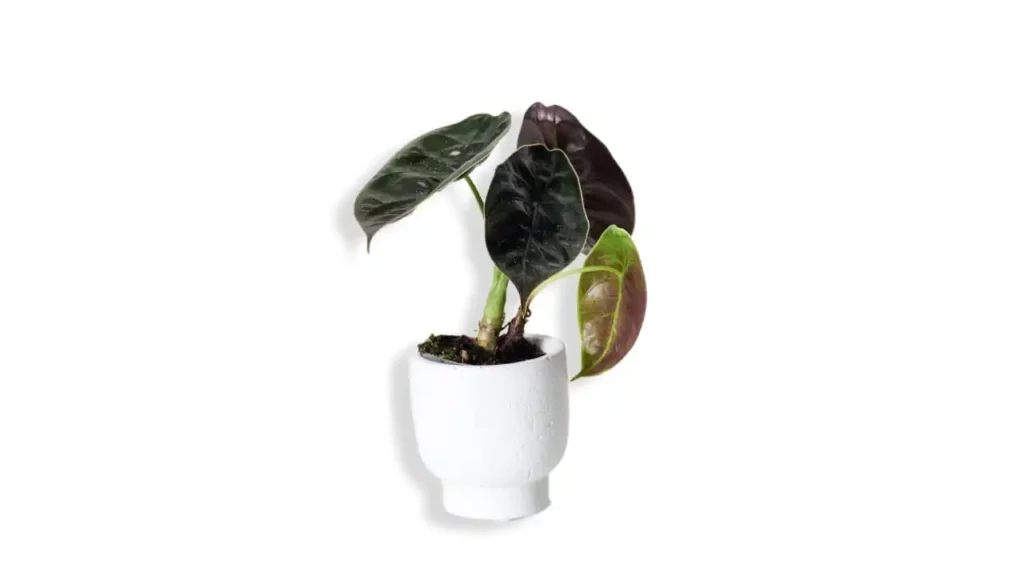
Propagation: Growing Fresh Alocasia Azlanii Flora
The creation of novel Alocasia Azlanii specimens from pre-existing ones mirrors the craft of fashioning a masterpiece from a cherished artwork – a nuanced process imbued with elation and anticipation. Multiple avenues pave the path to this achievement:
Segmentation: Envision the division of a generous slice of delectable pie into smaller, equally enticing portions destined for communal indulgence. This imagery encapsulates the essence of segmentation. Throughout the repotting endeavor, delicately sever your Alocasia Azlanii into smaller fragments, ensuring each segment harbors its own cluster of roots and foliage. Immerse these fragments in a bed of fresh earth, nurturing them as they burgeon into autonomous, flourishing entities.
Clipping Method: This approach bears semblance to the act of extracting a snippet from a treasured narrative to spawn an entirely new chronicle. Handpick a robust stem from your Alocasia Azlanii and cleave it just below a node – those minuscule protuberances adorning the stem. Shed any lower leaves to unveil the node, then immerse the clipping in water or earth, coaxing it to sprout roots. Once the roots have firmly entrenched themselves, transplant the clipping into its designated vessel, marveling as it thrives and blooms into a resplendent plant.
The propagation of Alocasia Azlanii heralds a gratifying expedition of exploration and expansion, presenting the chance to cultivate nascent life and distribute the marvels of nature to others. Through the amalgamation of patience, attentiveness, and a dash of ingenuity, one bears witness to the enchantment of metamorphosis unfolding before their very gaze.
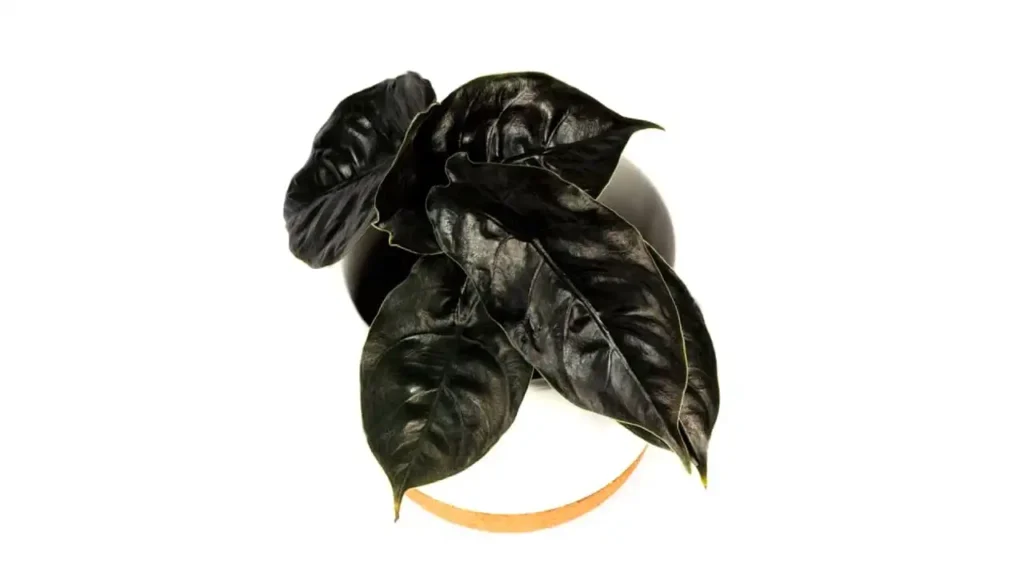
Potting & Repotting: Discovering the Perfect Haven
When delving into the realm of potting and repotting your cherished Alocasia Azlanii, it resembles embarking on a quest to unearth the optimal abode for a dear companion – a space that radiates a sense of snugness and comfort, devoid of any feeling of constriction or excessive spaciousness.
Selecting the Ideal Vessel:
The task of selecting a vessel for your Alocasia Azlanii mirrors the endeavor of handpicking a cozy haven for an intimate confidant. Opt for a receptacle that strikes the delicate balance between spaciousness and confinement, allowing the roots of your Alocasia Azlanii to sprawl out luxuriously while eschewing excessive dimensions. Alocasia Azlanii exhibits a penchant for snug accommodations, thus favoring a receptacle of precisely calibrated dimensions.
Crafting the Soil Symphony:
Envision the soil blend as the cornerstone of your companion’s newfound sanctuary – a concoction that must harmonize an array of nutrients and drainage capabilities to foster the flourishing of your Alocasia Azlanii. Mingle peat moss, perlite, and compost in a delicate dance, fashioning a blend that exudes an ethereal lightness, retains moisture with finesse, and bestows upon the plant the nourishment it craves. It’s akin to orchestrating a serene refuge for your botanical companion to ensconce itself within.
Discerning the Hour of Repotting:
Analogous to the scenario where a friend outgrows their current dwelling, your Alocasia Azlanii may similarly transcend the confines of its current receptacle. Vigilantly observe telltale signs such as roots gingerly peeping through the crevices of the drainage apertures or the soil manifesting an aura of undue compactness. When the occasion beckons for an upgrade, delicately usher your plant into a new, marginally larger receptacle teeming with fresh soil. It’s tantamount to proffering your confidant a commodious expanse to unfurl and thrive.
Tending to Your Plant Post-Repotting:
Following the relocation, your Alocasia Azlanii may necessitate an additional measure of solicitude to acclimate itself to its newfound abode. Seek out a locale suffused with the gentle caress of indirect sunlight, akin to a tranquil alcove nestled beside a sun-kissed windowpane, and administer water with a tender touch to facilitate the process of acclimatization. It’s akin to extending a heartfelt embrace to your companion in their nascent habitat, accompanied by a soothing libation and the solace of congenial companionship.
Devoting due diligence to the act of potting and repotting your Alocasia Azlanii is akin to entrusting it with the keys to its very own sanctuary. Armed with a receptacle of optimal proportions, a soil blend curated with meticulous precision, and a modicum of nurturing care, your plant will burgeon and flourish in its newfound surroundings.
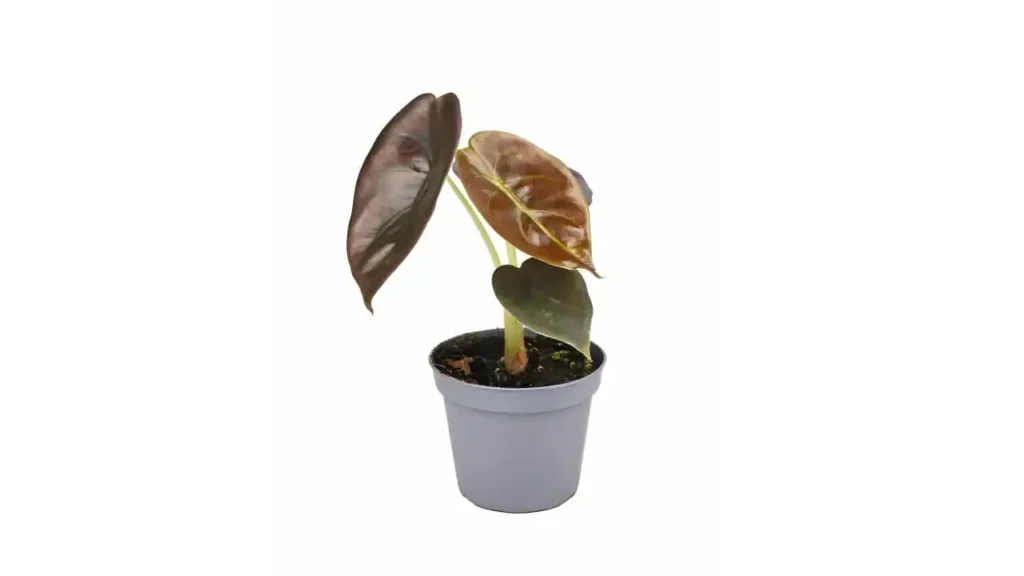
Pests & Diseases: Managing Infestations & Health Conditions
To uphold the vibrancy of your Alocasia Azlanii, one must remain vigilant against the encroachment of pests and diseases that threaten its aesthetic appeal. Presented below is a comprehensive manual for identifying and combating these prevalent botanical adversaries:
Perilous Pests:
- Aphids: These minuscule invaders seek refuge beneath foliage, imbibing sap and distorting the plant’s anatomy with their insidious feasting habits.
- Spider Mites: Stealthy creatures adept at weaving intricate webs upon leaves, feasting upon the plant’s vital fluids, resulting in speckled, jaundiced leaves and the potential for leaf loss.
- Mealybugs: Fuzzy, alabaster nuisances that, despite their seemingly innocuous appearance, pose a significant hazard to the plant. They extract sap, impeding growth, inducing yellowing, and leaving behind adhesive honeydew residue.
Dire Diseases:
- Root Rot: Excessive moisture or subpar drainage conditions can lead to the decomposition of roots, resulting in wilting, chlorotic leaves, and, ultimately, the demise of the plant.
- Leaf Spot: Obsidian, water-soaked lesions upon foliage may indicate the presence of leaf spot, a fungal malady that precipitates leaf yellowing and premature abscission.
- Powdery Mildew: This fungal affliction manifests as a powdery, alabaster film upon leaves, obstructing sunlight absorption and impeding growth, thereby compromising the plant’s vigor.
Taking Action:
- Preventative Measures: Maintain optimal environmental parameters and remain vigilant for any indications of distress.
- Remedial Measures: Swift intervention is paramount! Employ natural remedies such as insecticidal soap or neem oil, and expeditiously excise severely impacted foliage to halt further dissemination.
- Prudent Plant Practices: Adhere to proper irrigation protocols, avoid overcrowding, and ensure adequate aeration to deter the proliferation of pests and diseases.
By exercising diligence and proactivity against these adversaries, one can ensure the enduring splendor and vitality of the Alocasia Azlanii.
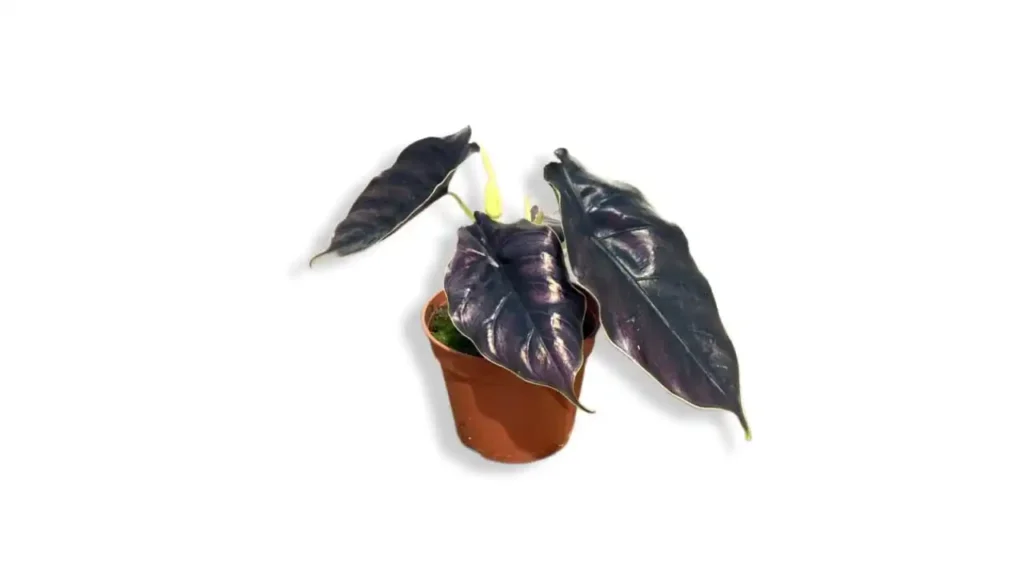
Common Problems: Troubleshooting Guide 101
Greetings, fellow aficionado of flora! Each verdant comrade possesses its idiosyncrasies, and your Alocasia Azlanii exemplifies this axiom. Let us delve into several typical hurdles you may encounter and strategies to overcome them:
- Chlorosis: Oh, behold those amber patches adorning your foliage! They may portend an excess or dearth of aqueous sustenance. Modify your hydration regimen and consider enriching the soil with botanical nutrients.
- Rusticating Foliage: The desiccated perimeters of your leaves suggest desiccation or saturation. Augment the ambient humidity around your Alocasia while vigilantly monitoring its watering regime.
- Foliar Contortion: Is your verdant companion casting a quizzical glance with its twisted fronds? It may be perturbed by fluctuations in thermal conditions or intrusive currents of air. Maintain a snug and equable environment to soothe its disquietude.
- Intruders: Uninvited guests seeking sanctuary? Remain vigilant for diminutive interlopers such as aphids or arachnids. A tender ablution with mild soap or an application of neem oil can dispossess them from their arboreal sanctuary.
- Maladies: Occasionally, exuberant affection expressed through excessive hydration may engender degeneration of roots or infestations by fungal pathogens. Allow the substrate of your plant to respire between waterings and ensure it resides within a receptacle affording adequate drainage.
Addressing these tribulations expeditiously and administering individualized care to your Alocasia Azlanii shall ensure its prosperity and imbue your domestic oasis with verdant vitality. Remember, even a modicum of horticultural attention can imbue your emerald companion with felicity and well-being!
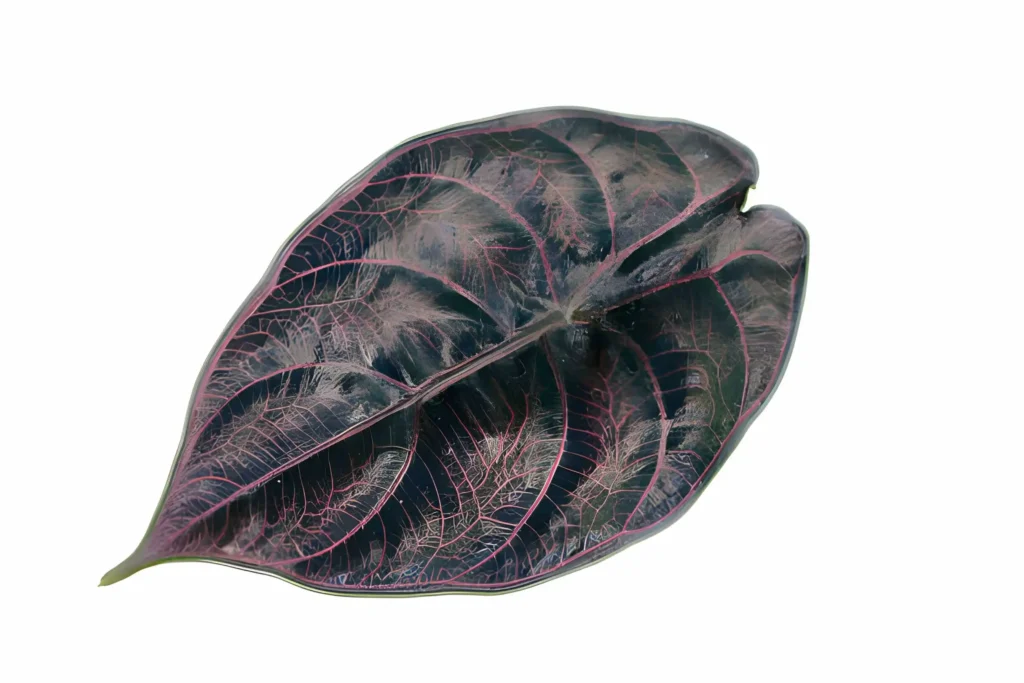
FAQs: Frequently Asked Questions
Is Alocasia Azlanii difficult to care for?
Alocasia Azlanii is considered moderately demanding in terms of care. While it requires attention to light, water, and humidity levels, it is not excessively difficult to maintain. With proper conditions, including bright, indirect light, consistent watering to keep the soil evenly moist but not waterlogged, and adequate humidity levels, Alocasia Azlanii can thrive indoors. Regular monitoring for pests and diseases, along with appropriate fertilization, will help ensure the health and vitality of the plant.
Can Alocasia Azlanii tolerate low light conditions?
Although Alocasia Azlanii prefers bright, indirect light, it can tolerate lower light conditions to some extent. However, prolonged exposure to low light may affect its growth and overall appearance. To ensure optimal health and growth, it’s best to provide the plant with as much indirect sunlight as possible. If low light is unavoidable, consider supplementing with artificial grow lights to mimic natural lighting conditions and promote healthy growth.
How often should I water Alocasia Azlanii?
Alocasia Azlanii requires regular watering to maintain optimal moisture levels in the soil. Water the plant thoroughly whenever the top inch of soil feels dry to the touch, ensuring that excess water drains freely from the pot. It’s essential to strike a balance and avoid both overwatering, which can lead to root rot, and underwatering, which can cause the plant to wilt and suffer. Monitoring the soil moisture and adjusting watering frequency accordingly will help keep Alocasia Azlanii healthy and thriving.
What should I do if my Alocasia Azlanii gets pests?
If you notice pests on your Alocasia Azlanii, it’s essential to take prompt action to prevent infestations from spreading and causing damage to the plant. Begin by isolating the affected plant to prevent pests from spreading to other plants. Then, thoroughly inspect the foliage for signs of pests such as aphids, spider mites, or mealybugs. Treat the infested plant with an appropriate insecticidal soap or neem oil, following the manufacturer’s instructions carefully. Regular monitoring and preventive measures, such as maintaining good airflow and hygiene practices, will help prevent future pest problems.
Where can I buy Alocasia Azlanii plants?
Alocasia Azlanii plants can be purchased from various sources, including specialty nurseries, botanical gardens, and online plant retailers. Check with local nurseries or botanical gardens to see if they carry Alocasia Azlanii or can order it for you. Additionally, many online plant retailers offer a wide selection of rare and exotic plants, including Alocasia Azlanii, for purchase. When buying plants online, be sure to choose reputable sellers with positive reviews and consider factors such as shipping costs and plant health guarantees to ensure a positive buying experience.
Read Me – Phalaenopsis Orchids: The Ultimate Care And Growing Guide

